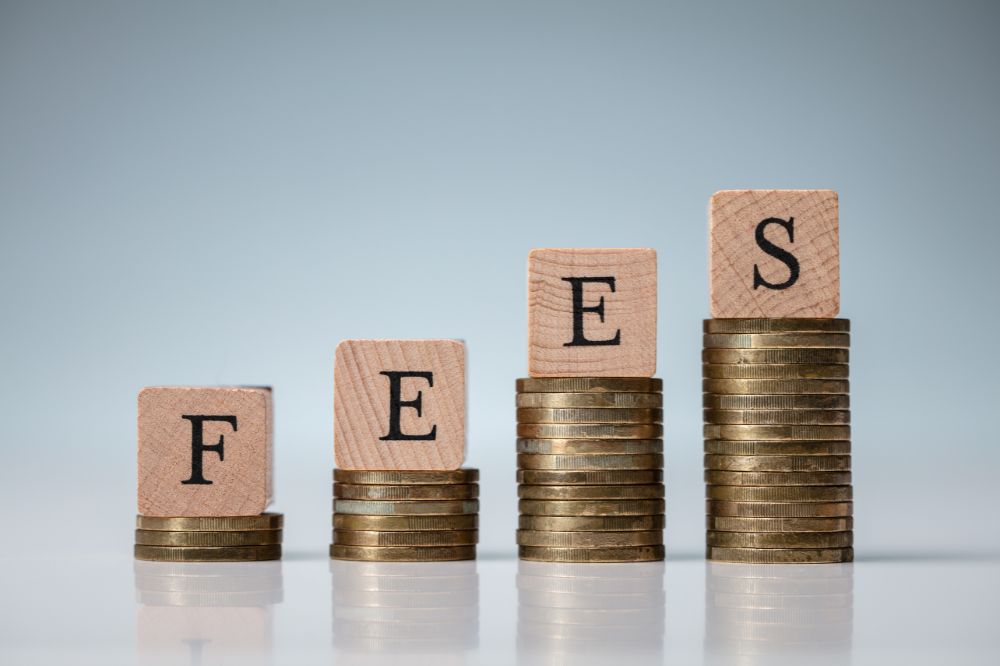Curious about the intricate dance between insolvency and unemployment? Wondering how these two factors, impacts and corporate bankruptcies, intertwine in today’s economic landscape? Dive deep into the relationship between insolvency, including business bankruptcies, corporate bankruptcies, and personal bankruptcy, and unemployment as we unravel their interconnectedness, shedding light on the impacts each has on the other. Discover the hidden links that shape financial stability, offering insights into broader economic trends and societal challenges, including impacts on unemployed workers and corporate bankruptcies. Join us on this exploration of how insolvency, including corporate and personal bankruptcy, and unemployment among workers influence each other, painting a vivid picture of their complex relationship in varying economic conditions.
Key Takeaways
- Understanding Bankruptcy: Bankruptcy can provide relief for individuals facing financial hardship by offering a fresh start through debt discharge or reorganization.
- Choosing the Right Bankruptcy Path: Assess your financial situation carefully to determine whether Chapter 7 or Chapter 13 bankruptcy is more suitable based on your income, assets, and debts.
- Unemployment Benefits and Bankruptcy: Understand how unemployment benefits may impact your bankruptcy filing, as they are considered income and can affect your eligibility for certain types of bankruptcy.
- Navigating Bankruptcy Without Income: Explore alternative options if you are unemployed, such as seeking pro bono legal assistance or exploring bankruptcy fee waivers to navigate the process effectively.
- The Role of a Bankruptcy Lawyer: Consider consulting with a bankruptcy lawyer to guide you through the complex legal procedures, ensure your rights are protected, and help you make informed decisions.
- Life After Bankruptcy: Embrace financial literacy and responsible money management post-bankruptcy to rebuild your credit, establish an emergency fund, and avoid falling back into financial distress.
Understanding Bankruptcy
Basics of Bankruptcy
Bankruptcy is a legal process designed to help individuals and businesses overcome financial difficulties. It provides a way to eliminate or restructure debts that cannot be repaid, benefitting payments through reduction. When filing for bankruptcy, individuals seek protection from creditors and aim to achieve a fresh financial start. The primary purpose of bankruptcy is to ensure fair treatment of creditors while offering debtors a chance to resolve their financial issues.
There are primarily two types of bankruptcy available to individuals: Chapter 7 and Chapter 13. Chapter 7 involves the liquidation of assets to pay off debts, while Chapter 13 allows for the creation of a repayment plan based on income levels.
Types of Bankruptcy
Chapter 7
Chapter 7 bankruptcy, also known as “liquidation bankruptcy,” involves the sale of non-exempt assets to repay creditors. One of the key benefits of Chapter 7 is the discharge of most unsecured debts, providing a quicker path to financial relief compared to other forms of bankruptcy. To qualify for Chapter 7, individuals must pass a means test that evaluates their income against state median levels and requirements. Once approved, the debtor’s non-exempt assets are sold by a trustee to settle outstanding debts.
Chapter 13
Chapter 13 bankruptcy, often referred to as “reorganization bankruptcy,” allows individuals with regular income to create a repayment plan spanning three to five years. Unlike Chapter 7, Chapter 13 does not involve asset liquidation but focuses on restructuring debts into manageable payments. Debtors under Chapter 13 can retain their assets while catching up on overdue payments like mortgages or car loans through the court-approved repayment plan.
The Means Test
The means test plays a crucial role in determining eligibility for Chapter 7 bankruptcy by examining an individual’s income and expenses. This test ensures that those with sufficient disposable income and solvency repay their debts through Chapter 13 rather than seeking complete debt discharge under Chapter 7. The means test calculation considers various factors such as household size, income sources, and allowable expenses. If an individual’s income falls below the state median level and they meet the solvency percent for a certain number of years, they may qualify for Chapter 7 based on the means test criteria.
Unemployment and Bankruptcy
Filing While Unemployed
Navigating bankruptcy while unemployed poses unique challenges for individuals facing financial distress. Without a steady income or solvency, filing for bankruptcy requires careful consideration. The lack of employment may affect the type of bankruptcy one can file for, impacting solvency and the overall process significantly.
Individuals without a job may find it challenging to meet the financial requirements associated with bankruptcy filings. Unemployed workers must assess their eligibility for Chapter 7 or Chapter 13 bankruptcy based on their current financial situation and solvency. The absence of solvency, a regular income stream can influence the court’s decision on the case, potentially affecting the outcome.
To manage bankruptcy proceedings effectively without employment, individuals should prioritize organizing their financial documents, seeking professional assistance, and ensuring solvency. Seeking guidance from bankruptcy attorneys or credit counselors, who can provide valuable insights into navigating the complex legal procedures involved in bankruptcy filings and solvency. Exploring alternative sources of income or government assistance programs can help alleviate some financial burdens during this challenging time.
No Money to File
For individuals facing financial hardship and solvency, affording the bankruptcy filing fees may seem daunting. Fortunately, there are options available to help those unable to cover these costs upfront. Some courts offer fee waivers for individuals who meet specific income criteria, allowing them to proceed with bankruptcy filings without paying the full amount.
Exploring payment plans with the court or seeking assistance from legal aid organizations can also provide relief for individuals struggling with financial constraints. These payment arrangements enable individuals to pay off their filing fees over time, making it more manageable to initiate the bankruptcy process. Moreover, researching community resources or nonprofit organizations that offer financial assistance for legal matters can be beneficial in covering these expenses.

Choosing the Right Bankruptcy Path
Chapter 7 Considerations
Before opting for Chapter 7 bankruptcy, individuals must assess their financial situation and solvency carefully. This chapter involves liquidating assets to pay off debts. It is crucial to understand that not all debts can be discharged under Chapter 7. Assets such as homes and cars may be at risk of being sold to repay creditors.
Specific requirements for Chapter 7 include passing the means test, which evaluates an individual’s income level. The process is quicker compared to Chapter 13, typically lasting around three to six months. However, it may result in the loss of non-exempt property.
- Pros:
- Quick process
- Debt discharge
- Cons:
- Risk of losing assets
- Not all debts are dischargeable
Chapter 13 Considerations
Choosing Chapter 13 bankruptcy involves creating a repayment plan to settle debts over three to five years. Individuals should consider their long-term commitment to adhering to this plan. Unlike Chapter 7, Chapter 13 allows individuals to keep their assets while restructuring debt payments.
One significant advantage of Chapter 13 is its ability to stop foreclosure proceedings and protect homes from being repossessed by creditors. This chapter provides a structured way for individuals with a regular income to manage their debts effectively.
- Benefits:
- Asset protection
- Stop foreclosure
Unemployment Benefits and Bankruptcy
Impact on Filing
Unemployment can significantly influence the decision to file for bankruptcy, especially when individuals struggle to meet financial obligations. The loss of a job can lead to a sharp decline in income, making it challenging to repay debts. This situation often prompts individuals to consider bankruptcy as a viable solution. The reduced income levels resulting from unemployment may also affect the eligibility criteria for filing bankruptcy, as income requirements play a crucial role in determining the type of bankruptcy one can pursue. Navigating the bankruptcy process during periods of unemployment requires careful consideration and planning. Seeking professional guidance from bankruptcy attorneys can provide valuable assistance in understanding the implications of filing for bankruptcy while unemployed.
Overpayment Discharge
Overpayment discharge in bankruptcy cases refers to the elimination of excess benefits received by individuals, typically related to unemployment benefits or other government assistance programs. In scenarios where individuals have received more benefits than they were entitled to, overpayment discharge provisions come into play during bankruptcy proceedings. For instance, if an individual unintentionally receives higher benefit payments due to administrative errors or miscalculations, they may seek overpayment discharge to rectify the situation. Overpayment discharge offers relief by allowing individuals to eliminate the excess benefits owed without facing additional financial burdens during their bankruptcy journey. This provision serves as a crucial lifeline for individuals facing financial challenges and seeking debt relief through bankruptcy.
Navigating Bankruptcy Without Income
Legal Assistance
Seeking legal advice is crucial when considering bankruptcy to navigate the complex legal procedures effectively. A bankruptcy attorney plays a vital role in guiding individuals through the process, ensuring compliance with laws and regulations. Having legal representation provides peace of mind and expertise during challenging bankruptcy proceedings.
- Legal advice ensures understanding of rights and obligations.
- Bankruptcy attorneys help in preparing necessary documentation accurately.
- Representation minimizes errors and increases the chances of a successful bankruptcy discharge.
Financial Strategies
Before opting for bankruptcy, individuals can adopt various financial strategies to manage debts efficiently. Exploring alternatives to bankruptcy, such as debt consolidation or negotiation, can provide relief from financial burdens. Improving financial health through budgeting, saving, and investing helps in avoiding insolvency.
- Debt management plans assist in organizing and repaying debts systematically.
- Negotiating with creditors for reduced payments or settlements can alleviate financial stress.
- Building an emergency fund safeguards against unforeseen financial crises.
Preparing for Bankruptcy Filing
Gathering Documentation
When considering bankruptcy, gathering documentation is crucial. Individuals must collect proof of income, tax returns, and asset information. Organize bank statements, bills, and loan documents for a smooth process.
To prepare for bankruptcy, create a checklist including pay stubs, credit card statements, and property deeds. Ensure all documents are up-to-date and accurate to avoid delays.
Organizing financial paperwork is key. Sort documents into categories like income, expenses, and debts. Keep records in a safe place for easy access during the filing process.
Consulting a Lawyer
Seeking advice from a bankruptcy lawyer early on has numerous benefits. A lawyer can provide legal expertise and personalized guidance tailored to individual circumstances.
During bankruptcy proceedings, a lawyer can navigate complex legal procedures, ensuring individuals understand their rights and obligations throughout the process.
Common concerns when consulting a lawyer include worries about costs and the impact on credit scores. However, legal counsel can offer solutions to alleviate these fears and provide peace of mind during challenging times.
The Role of a Bankruptcy Lawyer
Legal Advice
Legal advice is crucial during bankruptcy to navigate complex laws and protect individuals’ rights. Bankruptcy lawyers offer expertise in ensuring compliance with legal requirements, safeguarding clients from potential pitfalls. Following legal advice can prevent costly mistakes and provide clarity on available options.
The guidance of a bankruptcy lawyer is vital for individuals facing insolvency, as it ensures that their rights and interests are protected throughout the process. These professionals help clients understand their rights, obligations, and the implications of different decisions. By following legal advice, individuals can make informed choices that align with their best interests.
Bankruptcy lawyers play a pivotal role in ensuring a smooth bankruptcy process for individuals by providing expert guidance and representation. They assist in preparing necessary documentation, representing clients in court proceedings, and negotiating with creditors. Their knowledge and experience streamline the process, alleviating stress for those undergoing bankruptcy.
Filing Assistance
Individuals seeking assistance with filing for bankruptcy have several options to consider. Bankruptcy clinics and legal aid organizations offer pro bono services to help individuals complete paperwork accurately. These resources provide valuable support to those navigating the complexities of bankruptcy filing.
For those in need of professional assistance, hiring a bankruptcy attorney can simplify the filing process and ensure compliance with legal requirements. Attorneys specialize in bankruptcy law and can offer personalized guidance based on individual financial situations. Seeking reputable sources for filing assistance is essential to ensure accurate completion of paperwork.
Finding reputable sources for filing assistance involves researching local bar associations, legal aid clinics, or trusted referrals from friends or family members. Online resources such as state bar websites can also provide information on qualified bankruptcy attorneys in specific regions. It is crucial to verify credentials and experience before engaging any filing assistance services.
Life After Bankruptcy
Rebuilding Credit
Rebuilding credit after bankruptcy can be challenging, but it’s essential for financial recovery. Start by obtaining a secured credit card to establish a positive payment history. Make timely payments to show creditors your commitment to financial responsibility.
Consider credit counseling services to gain insights into managing credit wisely. Regularly monitor your credit report for errors and discrepancies that could negatively impact your score. Avoid applying for multiple new credits simultaneously to prevent further damage to your credit profile.
Financial Management
Effective financial management plays a crucial role in preventing insolvency post-bankruptcy. Create a budget outlining your income and expenses to track your financial health. Set aside savings regularly to build an emergency fund for unexpected expenses.
Develop positive money habits by limiting unnecessary spending and prioritizing essential expenses. Enhance your financial literacy through resources like workshops or online courses to make informed financial decisions. Seek guidance from a financial advisor to navigate complex financial matters effectively.

Avoiding Future Financial Distress
Budgeting Tips
Creating a realistic budget is crucial for maintaining solvency and avoiding future financial distress. Start by tracking all expenses and income to identify areas for improvement. Implement strict spending limits on non-essential items to prevent deficits.
To stick to your budget, consider using cash envelopes for different categories like groceries or entertainment. This method helps visualize spending limits and avoid overspending. Regularly review your budget to make necessary adjustments and ensure financial stability.
Budgeting not only helps prevent insolvency but also enables individuals to achieve their financial goals. By prioritizing expenses and saving for the future, you can build a financial cushion that safeguards against unexpected downturns.
Saving Strategies
Saving plays a vital role in securing your financial future and protecting against insolvency. Establish an emergency fund with at least three to six months’ worth of living expenses to cover unforeseen circumstances like job loss or medical emergencies.
To boost savings, consider automating transfers from your checking account to a separate savings account each month. This habit ensures consistent contributions towards your emergency fund without the temptation to spend the money elsewhere.
Having substantial savings acts as a safety net during times of financial hardship, reducing the need for drastic measures like bankruptcy. It provides peace of mind knowing that you have resources available to tackle unexpected expenses without jeopardizing your solvency.
Closing Thoughts
You’ve gained valuable insights into the relationship between insolvency and unemployment, understanding bankruptcy’s nuances, selecting the right path, and navigating the process without income. Remember, seeking professional advice and preparing diligently are crucial steps in this journey. Life after bankruptcy can be a fresh start if you manage your finances wisely and learn from past mistakes. By avoiding future financial distress through careful planning and informed decisions, you can secure a stable financial future.
Take charge of your financial well-being today. Educate yourself, seek guidance when needed, and make proactive choices to safeguard your financial stability. Remember, bankruptcy is not the end but a chance for a new beginning. Your commitment to financial responsibility will pave the way for a brighter tomorrow.
Frequently Asked Questions
What is the relationship between insolvency and unemployment?
Insolvency can be triggered by unemployment when individuals are unable to meet financial obligations due to loss of income. Unemployment can lead to the accumulation of debt, making insolvency more likely.
How do unemployment benefits affect bankruptcy decisions?
Unemployment benefits are considered as part of the income in bankruptcy filings. They can impact the type of bankruptcy one qualifies for and influence the overall financial situation during bankruptcy proceedings.
Do I need a bankruptcy lawyer if I am facing insolvency due to unemployment?
Yes, a bankruptcy lawyer can provide crucial guidance on navigating the complex legal processes involved in filing for bankruptcy. They can help you choose the right bankruptcy path and protect your rights throughout the process.
Can I file for bankruptcy without any income due to unemployment?
Yes, it is possible to file for bankruptcy without current income. However, eligibility requirements may vary based on factors such as assets, expenses, and types of debts owed.
What steps can I take to prepare for filing bankruptcy when facing unemployment?
Gather all financial documents, assess your debts and assets, explore available bankruptcy options, consider seeking advice from a bankruptcy lawyer, and create a budget plan to manage finances effectively during and after the process.




